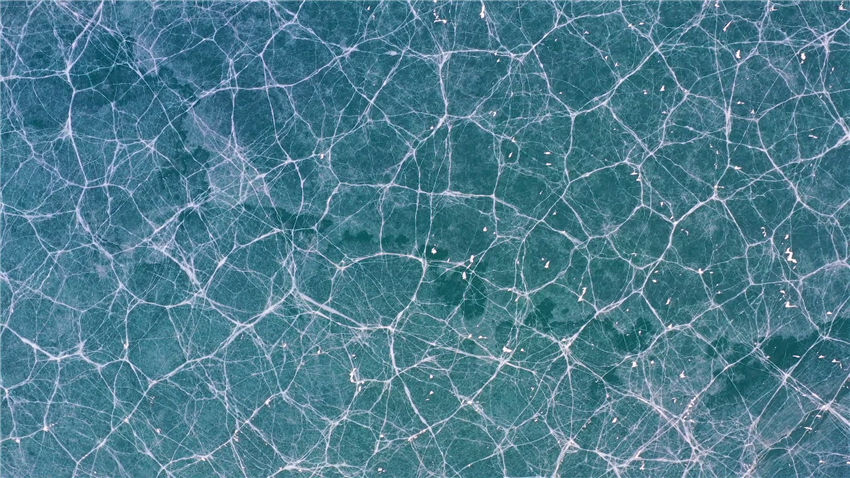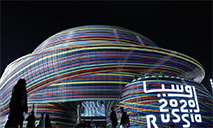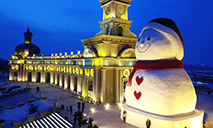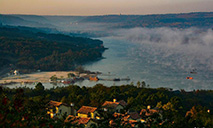Ice-making at 2022 Winter Olympics sets eco-friendly model: experts
BEIJING, Jan. 16 (Xinhua) -- Committed to hosting a green Olympic and Paralympic Winter Games, Beijing 2022 has not only made quality ice rinks suitable for respective sports in the competition venues, but has also stayed eco-friendly in ice-making.
Behind the process are two types of refrigerants - carbon dioxide (R744) and R449A, which the organizing committee chose following careful deliberation and consultation with experts from home and abroad. Of the nine ice rinks in the seven competition venues for Beijing 2022, five used CO2 in ice-making, and the other four used R449A. It is the first time natural CO2 refrigeration system is used at the Olympic Games.
In fact, it was the R507 refrigerants that were first considered when the organizers started to devise their ice-making plan. R507 is widely used across the globe and meets the requirement of the Montreal Protocol on Substances that Deplete the Ozone Layer for developing countries.
Given that R507 has a comparatively high Global Warming Potential (GWP) of 3985, Beijing 2022 finally decided to turn to greener ones.
After looking into global development trends and application of refrigerants, and having discussions with refrigeration and air-conditioning experts at home and abroad, the organizers decided to implement separate ice-making plans with the support of the International Olympic Committee (IOC).
Venues that need to make and maintain ice all year round, including the National Speed Skating Oval, use natural refrigerant CO2. By contrast, venues that only occasionally make ice, such as the National Aquatics Center and the National Indoor Stadium, use traditional refrigerant.
CO2 has zero Ozone Depletion Potential (ODP) and a GWP of only one. It is the refrigerant behind the CO2 transcritical refrigeration system, which was put forward as an ice-making solution for the National Speed Skating Oval by a panel comprising a dozen academicians of the Chinese Academy of Engineering and Chinese Academy of Sciences, senior experts from domestic refrigeration associations and representatives of the construction team.
As pointed out by Zhang Xinrong, professor of Peking University and a renowned expert in thermal engineering and natural refrigerant, CO2 transcritical refrigeration system boasts high security, low energy consumption and operational cost and environmentally friendliness. In addition, the heat generated from the process can be recycled, which increases the energy management efficiency with integrated cooling and heating. The system is one of the most promising in energy management of ice venues and the prospect of its application is broad across the world.
"Experts from international federations once told us that using common eco-friendly ice-making practises will be enough for the National Speed Skating Oval to meet Olympic standards. But we spent 18 months studying documents on ice-making from previous Olympic Winter Games and analyzing the pros and cons of every type of refrigerants. Eventually, we were able to come up with better solutions," said Song Jiafeng, an engineer with the Oval's construction team.
According to Song, using carbon dioxide as a refrigerant can increase ice-making efficiency by 30 percent and save around two million kilowatts of electricity per year.
The choice was applauded by the IOC, who "fully support" the decision and its implementation.
"We thank you very much for your decision to use CO2 as the refrigerant for the National Speed Skating Oval. You shall be commended for this important and responsible decision, that will be a very strong asset to support Beijing 2022 Sustainability ambitions and commitments as regards Olympic Venue infrastructure," wrote Pierre Ducrey in an e-mail to confirm Beijing 2022's choice of refrigerant.
When it comes to venues that only need occasional ice-making, the National Aquatics Center, the National Indoor Stadium and the Wukesong Sports Center are themselves examples of Beijing's environment friendliness, as legacies from the 2008 Summer Games.
Beijing 2022 organizers had discussions and feasibility researches with equipment suppliers, engineers and service providers of the venues and decided on using R449A.
R449A is a lower-GWP alternative for R507 worldwide as confirmed by organizations including the Air-Conditioning, Heating, and Refrigeration Institute. R449A has a GWP of 1282, 68 percent lower than that of R507.
Art Sutherland, who has worked as a consultant for the IOC for three decades, told the Beijing 2022 organizers that their decision to use CO2 and R449A won "huge applause from the whole audience" at the Atmosphere America convention.
"Your decision to use low GWP refrigerants has already had a ripple effect throughout our industry. There have been several new ice rink projects in China as well as a few more in North America that are now also planning on using low GWP refrigerants as a result of your leadership," he said.
"Your decision, has put the importance of low GWP refrigerants on the world stage and will be the tipping point in our industry internationally as well."
Photos
Related Stories
- Countdown to Beijing 2022 | Chinese Paralympians eye on Beijing 2022
- Countdown to Beijing 2022 | Youths from tropical countries eager to serve Beijing 2022
- Wildlife conservation prioritized in Beijing 2022's venue construction
- Beijing 2022 organizers put Olympians' safety in arrival and departure high on agenda
- Chinese-Hungarian Olympic champions eager to brace for Beijing 2022
Copyright © 2022 People's Daily Online. All Rights Reserved.










